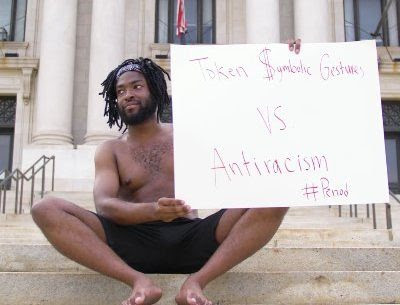Reporter Goes Public, Citing Mental Health
Does ‘Critical Race Theory’ Apply Beyond the U.S.?
UNC to Confront Hannah-Jones Issue Wednesday
‘Like Only a Local News Organization Can’
Black-Press Group Won’t Back Board on Expulsions
Ric Romo, a ‘Today’ Show Producer, Dies at 62
Spears Case Recalls Abuses of Women of Color
Freed U.S. Journalist Tells of Torture in Myanmar
Short Takes
Support Journal-ismsReporter Goes Public, Citing Mental Health
“In an unvarnished, heartfelt denunciation of racist attitudes by the leadership of New Jersey Advance Media, which owns the Star-Ledger and NJ.com, a Black reporter is alleging a culture of hypocrisy and a corporate mission of appealing to white readers,” David Wildstein wrote for newjerseyglobe.com.
“ ‘Black journalists can’t breathe, and it’s become my mental health hell,’ said Tennyson Donyea, who took to Twitter on Thursday to give voice to his grievances, Wildstein wrote June 17. “ ‘This may be career suicide. I may go bankrupt. But after working in this industry for five years, it’s the hill I must die on for the sake of my Black sanity.’
“Three weeks ago, Donyea said a senior-level manager asked him what they could do to salvage his frustration.
“ ‘I told them we need town halls. I told them the diversity committee needs to be independently moderated. But my biggest sticking point was, and still is, this: racism in leadership must go,’ he said.”

“Among other things, Donyea said editors reminded him that he’s writing for predominately white readers. The lack of reporters and editors of color at the Star-Ledger and other NJ Advance Media publications was conspicuous.
“He felt pressured to look the other way, but that stopped today.
“ ‘After years of dancing around for these people, I can say I would rather be dead, like the ancestors who jumped from the slave ships, than let these companies keep getting away with treating journalists of color the way they do,’ Donyea stated. . . .”
 Journal-isms asked Kevin Whitmer (pictured), senior vice president for content, expansion and development at NJ Advance Media, which includes the Star-Ledger and nj.com, for his reaction. He said “no comment on personnel matters.”
Journal-isms asked Kevin Whitmer (pictured), senior vice president for content, expansion and development at NJ Advance Media, which includes the Star-Ledger and nj.com, for his reaction. He said “no comment on personnel matters.”
However, Whitmer did reply Tuesday to a request for newsroom diversity figures. “We started reporting numbers at the end of [2018] and we were 91% white. So, yes, we have made progress but we need to do much more,” Whitmer said. “The staff is 84 percent White; 9 percent Black; 6 percent Hispanic . . . 1 percent Asian and 28 percent female.”
According to 2019 U.S. Census population estimates for Essex County, N.J., where the Star-Ledger is based, the racial breakdown is white alone, 48.9 percent; Black or African American alone, 41.9; American Indian and Alaska Native alone, 0.8 percent; Asian alone, 5.9 percent; Native Hawaiian and other Pacific Islander alone, 0.1 percent; two or more races, 2.4 percent; Hispanic or Latino, 23.8 percent; white alone, not Hispanic or Latino, 30.2 percent. “Female persons” are 51.9 percent.
The staff figures are imbalanced even when compared with the population of the entire state, which nj.com purports to cover: White alone, 71.9 percent; Black or African American, 15.1 percent; American Indian or Alaska Native alone, 0.6 percent; Asian alone, 10 percent; Native Hawaiian or other Pacific Islander alone, 0.1 percent; two or more races, 2.3 percent; Hispanic or Latino, 20.9 percent; White alone, not Hispanic or Latino, 54.6 percent.
Donyea has received support on Twitter from other journalists, but messaged Journal-isms Tuesday, “I’m currently on family and medical leave,” when he wrote his statement. “As I’m sure you can imagine all of this has taken a toll on my mental health. I’m awaiting legal advice.”
- Journal-isms: Urban Uprisings Helped to Change Newsrooms (July 13, 2017) (scroll down)
- Stefanie Murray, Center for Cooperative Media, Montclair State University: Tennyson Donyea’s public plea for change at NJ.com marks a pivotal moment for New Jersey news media
Chester W. Higgins, retired New York Times photographer and continuing Africanist, promotes his forthcoming book, “Sacred Nile.” In a blurb for Howard W. French’s “Born in Blackness,” author Sven Beckart asks, “What happens if we put Africa and Africans into the center of our thinking about the origins of the modern world?”
Does ‘Critical Race Theory’ Apply Beyond the U.S.?
The term “critical race theory” has been misused and weaponized so much by the right wing that its exact meaning is being lost. In general, however, it has been applied to the United States.
 Howard W. French (pictured), an Africa specialist, journalism professor and former correspondent for The New York Times and The Washington Post, points out that societies anchored in racism exist not just on this side of the Atlantic.
Howard W. French (pictured), an Africa specialist, journalism professor and former correspondent for The New York Times and The Washington Post, points out that societies anchored in racism exist not just on this side of the Atlantic.
French does so in his forthcoming book, “Born in Blackness: Africa, Africans, and the Making of the Modern World, 1471 to the Second World War,” due for October publication.
“In a sweeping narrative that traverses 600 years, one that eloquently weaves precise historical detail with poignant personal reportage, Pulitzer Prize finalist Howard W. French retells the story of medieval and emerging Africa, demonstrating how the economic ascendancy of Europe, the anchoring of democracy in America, and the fulfillment of so-called Enlightenment ideals all grew out of Europe’s dehumanizing engagement with the ‘darkest’ continent,” according to French’s website, repeating the publisher’s language .
“Born in Blackness dramatically retrieves the lives of major African historical figures whose stories have been repeatedly etiolated and erased over centuries, from unimaginably rich medieval African emperors who traded with Asia; to Kongo sovereigns who heroically battled seventeenth-century European powers; to ex-slaves who liberated Haitians from bondage. In doing so, French tells the story of gold, tobacco, sugar, and cotton — and the greatest ‘commodity’ of all, the millions of people brought in chains from Africa to the New World, whose reclaimed histories fundamentally help explain our present world.”
Writing in January for the American Bar Association, Janel George explained that critical race theory “recognizes that racism is codified in law, embedded in structures, and woven into public policy. CRT rejects claims of meritocracy or ‘colorblindness.’ CRT recognizes that it is the systemic nature of racism that bears primary responsibility for reproducing racial inequality.”
- Anne Applebaum, The Atlantic: Democracies Don’t Try to Make Everyone Agree
- Karen Attiah, Washington Post: The challenge for educators amid the critical race theory backlash: How do you fight hot air?
- Jeremy Barr, Washington Post: Critical race theory is the hottest topic on Fox News. And it’s only getting hotter.
- Rekha Basu, Des Moines Register: At all levels, Iowa Republicans ought to handle discomfort more like Ellie Kemper (June 10)
- Daily Beast: Why the Panic Over Critical Race Theory Is Just the Fake Sharia Law Scare All Over Again
- Charles W. Blow, New York Times: Demonizing Critical Race Theory (June 13)
- Wayne Dawkins, Afro, Baltimore: : Whitewashing American history will backfire
- Ross Douthat, New York Times: What Progressives Want, and What Conservatives Are Fighting
- Anna Faller, Northern Express, Traverse City, Mich.: Dear White Male Friends of a Certain Age
- Michael Gerson, Washington Post: I’m a conservative who believes systemic racism is real (June 21)
- Jarvis R. Givens, The Atlantic: What’s Missing From the Discourse About Anti-racist Teaching
- Adam Harris, The Atlantic: The GOP’s ‘Critical Race Theory’ Obsession
- Vincent Jungkunz, Washington Post: Who’s afraid of critical race theory? Not the students in my classes.
- Colbert I. King, Washington Post: A message to GOP congressmen: In D.C., critical race theory is simple truth-telling
- Tony Norman, Pittsburgh Post-Gazette: When ‘woke’ generals and silly congressmen collide
- Clarence Page, Chicago Tribune: Southern Baptists face turmoil over critical race theory, whatever it is
- Eugene Robinson, Washington Post: The cold truth about Republicans’ hot air over critical race theory
- Sarah Ruiz-Grossman, HuffPost: Teachers Say GOP’s Critical Race Theory Bills ‘Whitewash American History’
- Isabella Zou, Texas Tribune: What is critical race theory? Explaining the discipline that Texas’ governor wants to “abolish” (June 22)
UNC to Confront Hannah-Jones Issue Wednesday
“After more than a month of headlines, revelations, petitions and protests, the UNC-Chapel Hill Board of Trustees will meet Wednesday to confront the issue of tenure for Nikole Hannah-Jones,” Joe Killian reported Tuesday for NC Policy Watch.
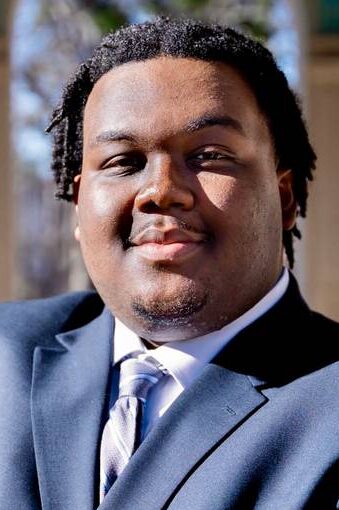 “The move comes after Lamar Richards (pictured), student body president at UNC-Chapel Hill and member of the school’s board of trustees, petitioned for a special meeting of the board to publicly deal with the controversy. Five other trustees joined in the petition effort, forcing a special meeting.
“The move comes after Lamar Richards (pictured), student body president at UNC-Chapel Hill and member of the school’s board of trustees, petitioned for a special meeting of the board to publicly deal with the controversy. Five other trustees joined in the petition effort, forcing a special meeting.
“There are enough votes on the board to approve Hannah-Jones’s tenure, sources on the board and at the UNC System level told Policy Watch this week. But members said they continue to face political pressure from the UNC Board of Governors, political appointees of the North Carolina General Assembly’s Republican majority.
“ ‘There have been discussions of financial settlements, of board members not showing up to the meeting and either preventing a vote or just not being on record even if the vote happens,’ one board member told Policy Watch Monday. . . .”
- Jack Carmichael, chapelboro.com: Who’s Supporting Nikole Hannah-Jones at UNC? Here’s A List
- Sarah Krueger, WRAL Durham, N.C.: Black faculty say UNC-Chapel Hill doesn’t walk the walk on diversity (June 23)
- Margaret Sullivan, Washington Post: Why it’s so important that UNC trustees give Nikole Hannah-Jones the tenure she deserves

‘Like Only a Local News Organization Can’
“All day long on Sunday, the Miami Herald homepage was dominated by a single all-caps word: ‘SEARCHING,’ ” Brian Stelter wrote Sunday in his “Reliable Sources” newsletter for CNN.
“The searching continued around the clock at the site of the condo collapse in Surfside, Florida. But Sunday’s news coverage reflected the fact that there’s very little actual news to report. The cause of Thursday’s collapse is still unknown. The confirmed death toll is still relatively low and the catalog of missing persons is still gut-wrenchingly high. So ‘SEARCHING’ is the current status, as families search for some reason, any reason, to hold onto hope.
 ” ‘First we offer our condolences to the families and victims impacted by this unimaginable tragedy,’ Miami Herald exec editor Monica Richardson (pictured) said when I checked in with her on Sunday. She said the English-language Herald and Spanish-language el Nuevo staffs are working to cover the disaster through ‘words, images, video, interactives and with data.’
” ‘First we offer our condolences to the families and victims impacted by this unimaginable tragedy,’ Miami Herald exec editor Monica Richardson (pictured) said when I checked in with her on Sunday. She said the English-language Herald and Spanish-language el Nuevo staffs are working to cover the disaster through ‘words, images, video, interactives and with data.’
” ‘This is our South Florida community and we have a responsibility to keep the community informed,’ Richardson said. ‘It is our responsibility and our mission. This is a newsroom that went through coverage of Pulse and Parkland so they understand the pain. It’s hard work and exhausting work but we are here for the long haul. This is a historical moment for the country and we are digging to find answers and provide coverage like only a local news organization can.’ “
Richardson, formerly senior managing editor of the Atlanta Journal-Constitution, became the Herald’s managing editor on Jan. 1.

Black-Press Group Won’t Back Board on Expulsions
The board of the trade organization representing the Black newspaper press voted 15-2 last Wednesday to expel three publishers who are taking the organization to court, but the more than 70 members of the National Newspaper Publishers Association at the virtual convention declined to ratify the board’s decision, Benjamin F. Chavis Jr., the NNPA president, confirmed for Journal-isms on Tuesday.
Chavis would not identify the two who voted no on the decision and described the membership vote as “split,” with a simple majority needed to pass. Some apparently believed that expulsion would mean further exposing the organization’s internal workings.
In 2019, NNPA was taken to court by its former chair, Dorothy R. Leavell of the Chicago and Gary (Ind.) Crusader, who asserted that Chavis and his allies worked behind the scenes to disqualify pro-Leavell publishers from voting for her re-election bid. She lost.
In May, the board secretary, Jackie Hampton, publisher of the Mississippi Link, notified Leavell, Amelia Ashley-Ward of the Sun Reporter in San Francisco and the California Voice, and Carole Geary of the Milwaukee Courier that the board intended to consider expelling them from NNPA at its June 23 meeting. The letter cited alleged offenses that it said “have threatened the welfare of the NNPA.”
Meanwhile, the NNPA “completed its historic virtual convention by unanimously re-electing its all-Black women executive board,” Stacy M. Brown, reported Monday for NNPA. All were unopposed.
- St. Louis American: American again named nation’s top Black newspaper
Also appearing virtually were President Biden, Dr. Anthony Fauci and Dr. Rochelle Walensky, director of the Centers for Disease Control and Prevention, who spoke about the importance of vaccinations. Others included House Speaker Nancy Pelosi, D-Calif., and Cedric Richmond, White House senior advisor and director of public engagement, Brown reported.
Darnella Frazier, the African American teenager who filmed former Minneapolis Officer Derek Chauvin fatally kneeling on George Floyd’s neck, received the Ida B. Wells National Photojournalism Award.
Ten-time Grammy winner Chaka Khan was given the 2021 National Lifetime Achievement Legacy Award.
- State Rep. Anthony Daniels, al.com: I wasn’t sure about the vaccine, then I got COVID
- Suzette Hackney, USA Today: May Derek Chauvin’s lack of remorse as he heads to prison be his final insult to George Floyd
- Gemma Schneider and Ariel Tu, Law & Crime: ‘They’re Probably Going to Try to Kill Him’: Inmate and Former Prison Warden Agree Derek Chauvin Will Be ‘Instant Target’ in Prison
Ric Romo, a ‘Today’ Show Producer, Dies at 62
 Ric Romo (pictured), a West Coast producer for NBC’s “Today” show, where he worked for more than 30 years, died over the weekend after a massive heart attack, his cousin, Gilbert Rios, reported on Facebook. Romo was 62.
Ric Romo (pictured), a West Coast producer for NBC’s “Today” show, where he worked for more than 30 years, died over the weekend after a massive heart attack, his cousin, Gilbert Rios, reported on Facebook. Romo was 62.
“Today” reported on its website, “Ric’s work on the red carpet earned him a warm regard from many of the celebrities he met, including one Hollywood great who also became a great friend to him, the late acting and dancing legend Fred Astaire.
“As Carson Daly said on TODAY Monday: ‘He was a great storyteller; he was incredibly funny. Ric knew everybody on the NBC lot — they knew him — he knew the security guards and all the way up to Johnny Carson himself. He brought a smile to everybody’s face, literally just when Ric walked in the door.’ . . .”
Spears Case Recalls Abuses of Women of Color
“Among the many shocking revelations made by Britney Spears on her conservatorship while appearing virtually before a Los Angeles Superior Court judge, there was this. She said those overseeing her are forcing her to remain on birth control,” Lulu Garcia-Navarro said Sunday on NPR’s “Weekend Edition Sunday.”
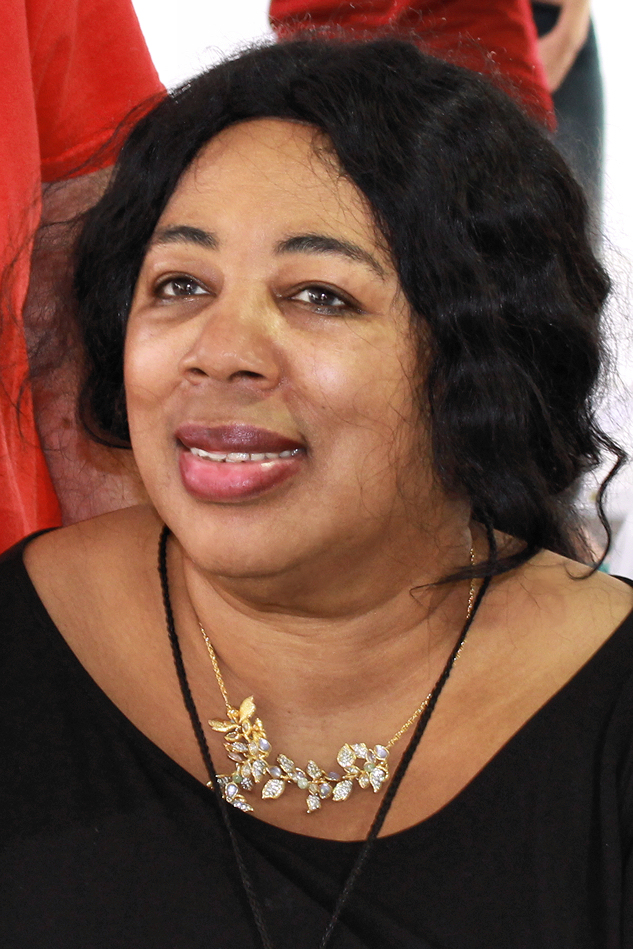 Garcia-Navarro’s guest, author, journalist and medical ethicist Harriet A. Washington (pictured) replied, “Well, frankly, I was surprised. I don’t follow entertainment news very closely, but I suppose what surprised me was to hear about this befalling a young WASP woman of means because although involuntary sterilization is – sounds shocking, it’s actually something that has been practiced very widely in this country.”
Garcia-Navarro’s guest, author, journalist and medical ethicist Harriet A. Washington (pictured) replied, “Well, frankly, I was surprised. I don’t follow entertainment news very closely, but I suppose what surprised me was to hear about this befalling a young WASP woman of means because although involuntary sterilization is – sounds shocking, it’s actually something that has been practiced very widely in this country.”
Washington continued, “Buck v. Bell in 1927, it’s important to note, was never overturned. In that ruling, the Supreme Court argued that it was perfectly acceptable to force sterilization on a woman because of her low intelligence, her alleged low intelligence, and that it’s better for all the world, you know, to prevent the birth of more low-intelligence children.”
Washington also said, “And I think we have to remember that in the 1980s and ’90s, 85% of the women who were forced to have Norplant implanted — it’s a contraceptive that rendered a woman infertile for a period of at least five years. This was forcibly implanted in Black and Hispanic women.
“And why? As part of a court sentence. Women who had been brought up to court were told by judges, OK, you can go to jail for eight years, or you can have Norplant implanted and be on probation — Norplant or jail. So in that case, the rationale had to do with controlling their behavior. And I wonder if indeed what we’re reading is actually true, then that’s certainly something I would consider in this scenario.”
Freed U.S. Journalist Tells of Torture in Myanmar
“Myanmar security forces punched, slapped and beat a U.S. journalist and kept him blindfolded for more than a week of interrogation, he said after being deported to the United States following over three months in detention,” Matthew Tostevin reported Sunday for Reuters.
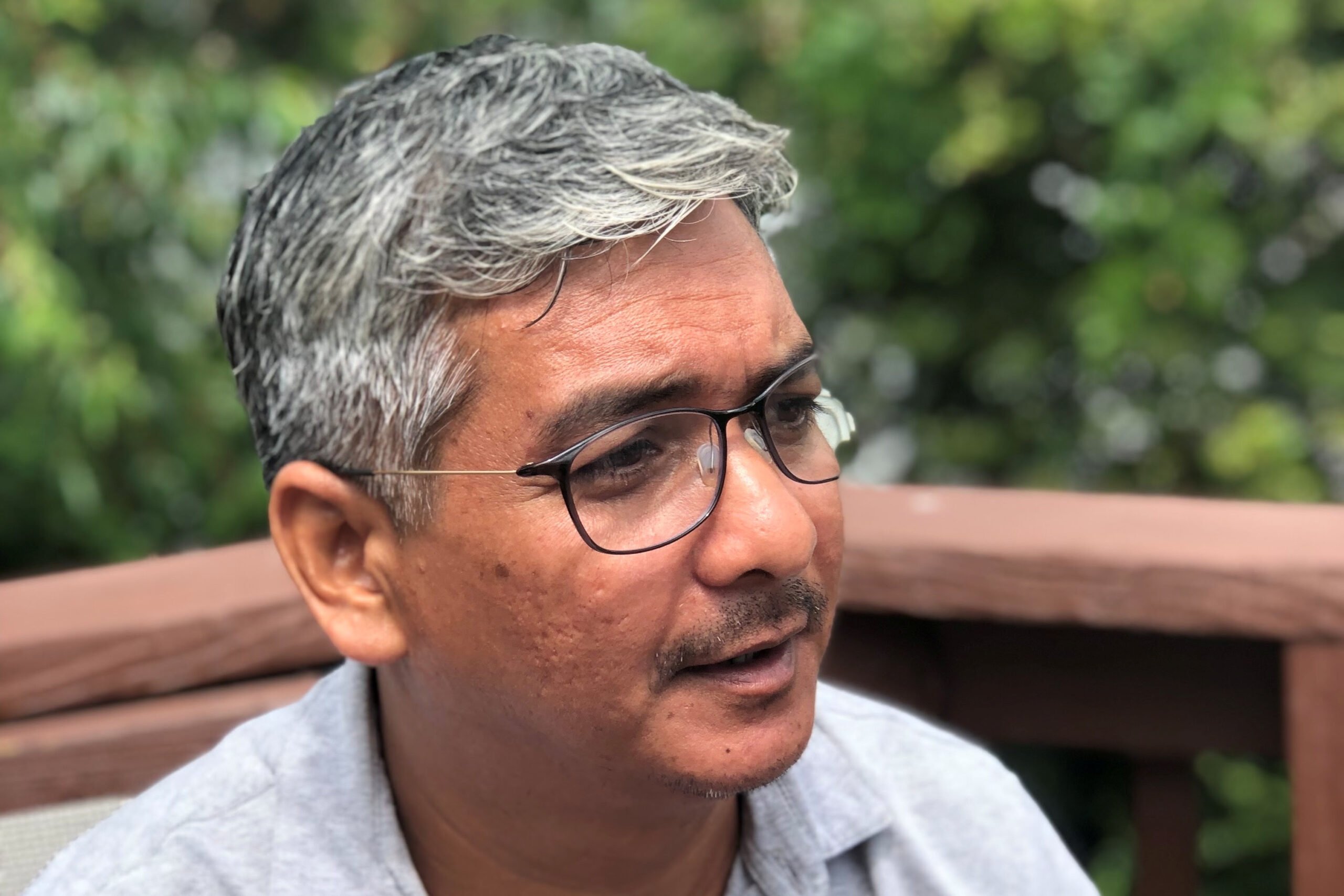 “Nathan Maung (pictured), 44, editor-in-chief of the online news platform Kamayut Media, was detained on March 9 in a raid and freed on June 15. He said his colleague Hanthar Nyein, who remains in detention, had been tortured more harshly, as had other people he met in prison.
“Nathan Maung (pictured), 44, editor-in-chief of the online news platform Kamayut Media, was detained on March 9 in a raid and freed on June 15. He said his colleague Hanthar Nyein, who remains in detention, had been tortured more harshly, as had other people he met in prison.
“A junta spokesman did not respond to a request for comment on the account by Nathan Maung, which echoes those of some of the thousands of others who have “been detained since the army overthrew elected leader Aung San Suu Kyi on Feb. 1.
“The junta has said detainees are being treated in accordance with the law.
” ‘The first three to four days were the worst,’ Nathan Maung told Reuters in a telephone interview from Virginia on Friday.
” ‘I was punched and slapped several times. No matter what I said, they just beat me. They used both their hands to slap my eardrums many times. They punched my cheekbones on both sides. They punched my shoulders. I was not allowed to stand up. My legs were swollen. I could not move anymore,’ he said. . . .”
- Myanmar Now: Myanmar Now’s multimedia reporter Kay Zon Nway is among the 700+ people released from Insein Prison (Twitter)
Short Takes
- Journal-isms is seeking an assistant editor to work part time, 15 to 20 hours weekly. Please see the “About” section of this website for more information.
- “A divided D.C. Council voted Tuesday to ban the sale of flavored tobacco products in the District [of Columbia], including menthol cigarettes,” Julie Zauzmer reported for the Washington Post. The 8-to-5 vote was the council’s second in favor of the legislation, meaning that it now heads to the desk of Mayor Muriel E. Bowser, who supports the ban for health reasons and is expected to sign it into law. Benjamin F. Chavis Jr., president of the National Newspaper Publishers Association, told Journal-isms by telephone that NNPA’s position opposing the ban has not changed, saying its enforcement would have a negative effect on African Americans.

- “Colleagues often asked me about the similarities between being a TV journalist and guest hosting ‘Jeopardy‘” CNN’s Dr. Sanjay Gupta, who is guest-hosting for two weeks, wrote Sunday. “Truth is, there aren’t many. In much the same way that an ophthalmologist and orthopedic surgeon are both doctors, you probably wouldn’t see the eye doctor for your broken leg. The same was true for ‘Jeopardy!’ Yes, they are both TV jobs, but they are also entirely different. I even had to unlearn some TV journalist habits to really get into the groove of the show. For starters, I was blown away by the incredible speed at which the game is played. . . . The goal was to tape five shows a day. That is 305 clues. One every 15 seconds.”
- Jovita Idár and Jesús Colón will be posthumously inducted into the National Association of Hispanic Journalists Hall of Fame “for dedicating their lives and careers to advocating for the fair and accurate representation of Latinos in news,” NAHJ announced. “Both champions of Latinx storytelling, they will be honored at the 2021 Hall of Fame Gala on the evening of Saturday, July 17. . . . . A native of Laredo, TX, Jovita Idár was born into a family that exposed injustices such as the lynchings of Mexican-Americans through her father’s Spanish-language newspaper, La Crónica. . . . Jesús Colón, born in Puerto Rico in 1901, raised awareness through his writings about the hardships he faced and his identity as a Puertorriqueño. In the late 1920s, Colón founded a Spanish language newspaper, but he would go on to write in both Spanish and English throughout a career that spanned more than four decades. . . .”
- “Three journalists with Al Jazeera who were tear-gassed during a protest in Ferguson, Missouri, after Michael Brown’s death in 2014 have settled a lawsuit with the county whose SWAT team fired the tear gas,” Jim Salter reported Thursday for the Associated Press. The Al Jazeera America journalists — correspondent Ash-har Quraishi, producer Marla Cichowski and photojournalist Sam Winslade — were preparing for a live broadcast when the St. Charles County SWAT team officers fired tear gas toward them. The county agreed to pay $280,000.
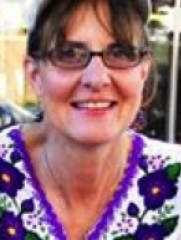 “We started to cover the Keystone XL Pipeline and its predecessor Keystone I in our newspaper, Native Sun News Today, 13 years ago,” the Native Sun News in South Dakota editorialized. “Our ace reporter Talli Nauman (pictured) saw the Lakota people’s opposition to it, and she has been writing news about the resistance to these and other pipelines as it has grown ever since. South Dakota’s mainstream media didn’t have a clue until Talli began explaining it to them. Because of her journalistic efforts, Native anti-pipeline leadership gained worldwide coverage. And now, along with so many Lakota people in struggle, Talli’s groundbreaking work is vindicated with the Canadian TC Energy Inc. oil giant’s decision to cancel construction. . . . “
“We started to cover the Keystone XL Pipeline and its predecessor Keystone I in our newspaper, Native Sun News Today, 13 years ago,” the Native Sun News in South Dakota editorialized. “Our ace reporter Talli Nauman (pictured) saw the Lakota people’s opposition to it, and she has been writing news about the resistance to these and other pipelines as it has grown ever since. South Dakota’s mainstream media didn’t have a clue until Talli began explaining it to them. Because of her journalistic efforts, Native anti-pipeline leadership gained worldwide coverage. And now, along with so many Lakota people in struggle, Talli’s groundbreaking work is vindicated with the Canadian TC Energy Inc. oil giant’s decision to cancel construction. . . . “
- “Congressional leaders and a media advocacy group are urging the Federal Communications Commission to examine how policy decisions and programs have disparately harmed Black Americans and other communities of color, according to a letter sent Tuesday to the acting FCC chair,” Kat Stafford reported Tuesday for the Associated Press. George Winslow of TV Technology added, “The letter, from twenty five members of Congress and the media advocacy group Media 2070, “reflects widespread concern about the impact of racism and the underrepresentation of African Americans and other communities of color in terms of media ownership, employment in newsrooms and representation in entertainment programming.”
- Boston Review is proud to name Nia T. Evans and Nate File its inaugural fellows for Black Voices in the Public Sphere, a fellowship initiative designed to prepare and support the next generation of Black journalists, editors, and publishers,” the publication announced June 21. “Recognizing aspiring Black media professionals who demonstrate an interest in exploring the publishing world and a commitment to enlarging the landscape of ideas in the media, this program provides fellows with training, mentorship, networking opportunities, and career development workshops. With the guidance of Boston Review editors and professional mentors, fellows will also develop projects to be published online or in print. . . .”
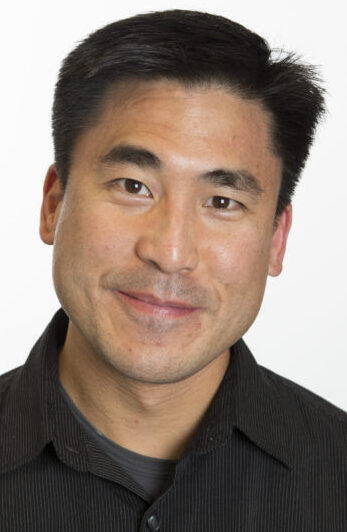 “Scott Tong (pictured) will be the new co-host of NPR and WBUR’s Here & Now, the live midday news program distributed on 477 NPR stations nationwide,” WBUR in Boston announced June 23. “He starts on July 12th, and will be based out of Washington D.C. Tong joins Here & Now after 16 years at Marketplace. He was the China bureau chief in Shanghai from 2006 until 2010. Since then, he’s been a senior correspondent and has reported from more than a dozen countries — from refugee camps in East Africa to shoe factories in eastern China. . . .”
“Scott Tong (pictured) will be the new co-host of NPR and WBUR’s Here & Now, the live midday news program distributed on 477 NPR stations nationwide,” WBUR in Boston announced June 23. “He starts on July 12th, and will be based out of Washington D.C. Tong joins Here & Now after 16 years at Marketplace. He was the China bureau chief in Shanghai from 2006 until 2010. Since then, he’s been a senior correspondent and has reported from more than a dozen countries — from refugee camps in East Africa to shoe factories in eastern China. . . .”
- “Group Black Inc., a collective aimed at deepening the pipeline of Black-owned media companies, launched Tuesday with an ad-spending target of $75 million from a WPP PLC unit,” Nat Ives reported for The Wall Street Journal. “The new collective and business accelerator seeks to attract ad spending from marketers that are trying to diversify where they advertise. Group Black aims to advise advertisers and agencies on possible media plans with its members, which include Essence Communications Inc., the publisher of Essence magazine, which focuses on Black women; Holler Technologies Inc., which specializes in stickers and GIFs for digital messages and posts; esports startup PlayVS and news companies Shade Room LLC and Baller Alert Inc. . . .”
- Howard University’s WHUT-TV will be at the center of a Washington-area partnership using a new digital broadcast technology known as “NextGen” TV, formally ATSC, Scott Fybush reported Monday for Current. “Its broadcast signal will get new equipment and a power boost to serve as the ATSC 3.0 host station, carrying not only WHUT’s own programming but also ATSC 3.0 streams from four major commercial stations. . . .” ATSC stands for Advanced Television Systems Committee, Inc., an international, non-profit organization developing voluntary standards for digital television.
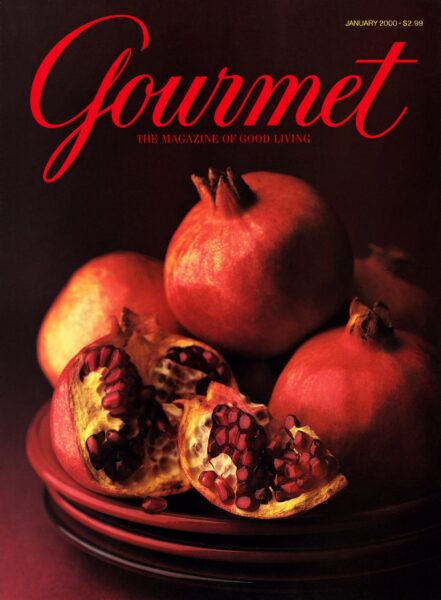
“I asked him, ‘Can you shoot some pomegranates for me?’ What he came back with stunned me,” the former Gourmet magazine editor Ruth Reichl recalled of Mr. Yanes’s cover photo for the January 2000 issue,” The New York Times wrote. “No one romanced food the way he did. He made food sexy and gorgeous.” (Credit: Romulo Yanes/Condé Nast, via Shutterstock)
- Romulo Yanes, who in his 26 years as the staff photographer helped define Gourmet magazine’s striking visual identity by capturing the natural beauty of food without relying solely on the embellishments of ornamental props or elaborate styling, died on June 16 at his home in Tampa, Fla.,” Alex Vadukul reported for The New York Times. “He was 62.”

“Edna Schmidt (pictured) has died. She was 51,” Veronica Villafañe reported Sunday for her Media Moves column. “Despite numerous posts by friends and colleagues on social media, there is currently no official cause of death. But multiple posts and reports indicate she died in Puerto Rico. Schmidt was the founding co-anchor of Univision Chicago’s newscast. She worked in the Windy City 10 years before stepping up to Univision network, where she would become weekend anchor and later, move to the late weeknight newscast. . . .”
- “Earlier this year, Bernard Goldberg quietly departed HBO’s Real Sports without much fanfare after more than two decades on the program. In recent months,” Brandon Contes wrote Monday for Mediaite, “Goldberg amplified his quiet exit, trashing the show and now blaming his departure on host Bryant Gumbel. ” ”I told the show’s host, Bryant Gumbel, that I recently tuned in to watch a National Hockey League playoff game and heard a player, at a pre-game ceremony, say that, ‘racism is everywhere,’ Goldberg writes. ‘I told Gumbel that since I didn’t tune in to get a lecture on what a racist country America is, I changed the channel. To which Bryant replied: ‘Racism is everywhere.’ . . .”
- “The National Press Photographers Foundation (NPPF) is pleased to provide a $15,000 annual fellowship to honor the memory of Michel du Cille, a dedicated photojournalist who died while covering the Ebola crisis in Liberia,” the foundation has announced. “Our goal is to encourage photojournalists to cover topics of great importance in today’s changing world.” The foundation began accepting applications on Monday.
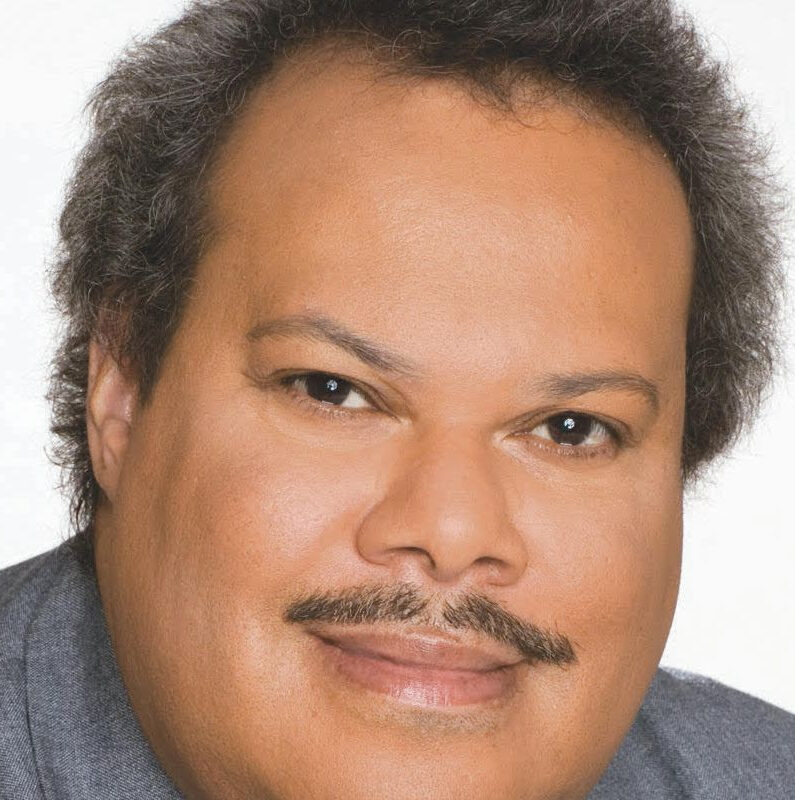 “David Smallwood (pictured) caught the journalism bug as a teen, writing for Black X-Press, the newspaper then published by his mentor, the late pioneering civil rights activist and journalist Lu Palmer,” Maudlyne Ihejirika reported June 18 for the Chicago Sun-Times. “That was from 1973 to 1975. At the same time, he was working his way up at the Chicago Sun-Times, where he worked from 1972-1977, starting as what was then called a ‘copyboy,’ then moving to wire room clerk, library clerk, and finally, reporter. It was the beginning of a prolific career. Mr. Smallwood would take his love of words to the Black press, as assistant editor at Jet Magazine, and as a member of the teams that built Dollars & Sense magazine and N’Digo ‘magapaper’ into renowned publications. Mr. Smallwood, of Park Forest, who was diagnosed last year with multiple myeloma, died June 11 from complications of the rare blood and bone cancer, and COVID-19. He was 66. . . .”
“David Smallwood (pictured) caught the journalism bug as a teen, writing for Black X-Press, the newspaper then published by his mentor, the late pioneering civil rights activist and journalist Lu Palmer,” Maudlyne Ihejirika reported June 18 for the Chicago Sun-Times. “That was from 1973 to 1975. At the same time, he was working his way up at the Chicago Sun-Times, where he worked from 1972-1977, starting as what was then called a ‘copyboy,’ then moving to wire room clerk, library clerk, and finally, reporter. It was the beginning of a prolific career. Mr. Smallwood would take his love of words to the Black press, as assistant editor at Jet Magazine, and as a member of the teams that built Dollars & Sense magazine and N’Digo ‘magapaper’ into renowned publications. Mr. Smallwood, of Park Forest, who was diagnosed last year with multiple myeloma, died June 11 from complications of the rare blood and bone cancer, and COVID-19. He was 66. . . .”
- Jason Frazer, meteorologist for the NBC affiliated WKYC-TV in Cleveland, and Craig Herrera, Seattle’s KING-TV (NBC) meteorologist, are among six meteorologists signed by FOX Weather, FOX News Media’s new streaming weather service.
 “We’re thrilled to announce that Tariro Mzezewa (pictured) is joining National to cover the South alongside Richard Fausset and Rick Rojas,” National Editor Jia Lynn Yang told New York Times staffers on Friday. “Tariro, who joins us from Travel, will be based in Atlanta, where she will help us stay on top of one of the newsiest regions in the country and bring a focus on covering Black life in the South. Since joining Travel in 2018, Tariro has shown a flair for spotting utterly unique stories. She has written about tour companies that cater to Black women looking for love; about how cities tell the story of slavery to tourists; and about safari companies not caring for African travelers. . . .”
“We’re thrilled to announce that Tariro Mzezewa (pictured) is joining National to cover the South alongside Richard Fausset and Rick Rojas,” National Editor Jia Lynn Yang told New York Times staffers on Friday. “Tariro, who joins us from Travel, will be based in Atlanta, where she will help us stay on top of one of the newsiest regions in the country and bring a focus on covering Black life in the South. Since joining Travel in 2018, Tariro has shown a flair for spotting utterly unique stories. She has written about tour companies that cater to Black women looking for love; about how cities tell the story of slavery to tourists; and about safari companies not caring for African travelers. . . .”
- Fox News anchor Harris Faulkner discussed motherhood last week at the Cannes Lions International Festival of Creativity. About her legacy, she said, “If anybody would just say that I was a great mom, that’s enough for me … and I mean . . . that across every spectrum of my life because I’m raising these young women of color under-construction, my biracial daughters who are 12 and 14. And I want them to be more aware of what they can do than anybody tells them that they can and cannot do based on anything demographically. . . .”
 “As a TV newscaster, Shelbey Roberts (pictured) is used to reporting crime. But not first hand,” Phil Luciano reported Monday for the Journal Star in Peoria, Ill. “Earlier this month, the 26-year-old called 911 after returning home to find a ransacked mess. Burgled, her apartment had been torn apart, with belongings and furniture upended and disarranged throughout. . . . Though initially rattled and angered, Roberts has since found an insightful upside to her first in-your-face experience with lawbreaking. She said she has learned a deeper compassion for crime victims, especially those she encounters as a reporter. . . .”
“As a TV newscaster, Shelbey Roberts (pictured) is used to reporting crime. But not first hand,” Phil Luciano reported Monday for the Journal Star in Peoria, Ill. “Earlier this month, the 26-year-old called 911 after returning home to find a ransacked mess. Burgled, her apartment had been torn apart, with belongings and furniture upended and disarranged throughout. . . . Though initially rattled and angered, Roberts has since found an insightful upside to her first in-your-face experience with lawbreaking. She said she has learned a deeper compassion for crime victims, especially those she encounters as a reporter. . . .”
- In 2000, Brazilian photographer Alexandro Wagner Oliveira da Silveira was hit by a rubber bullet fired by the police as he covered a demonstration. He was blinded in his left eye, Júlio Lubianco reported June 16 for LatAm Journalism Review. “Last week, the Supreme Court (STF, for its acronym in Portuguese), the country’s constitutional court and the last stop for legal cases in the country, recognized that he is entitled to compensation from the State.” Silvera is skeptical his case will fully be resolved, Lubianco wrote under the headline, “Journalists who lost eyesight after being injured covering protests face long court battles.” “Silveira’s skepticism is justified by the 21 years of a costly, arduous and exhausting legal battle.”
- Addressing press freedom in Egypt, “The UN Working Group on Arbitrary Detention has concluded that all of the ten journalists named in a letter it received last year from Reporters Without Borders (RSF) are or were detained arbitrarily,” Reporters Without Borders said Friday. The conclusion “was issued in response to the letter that RSF sent on 30 April 2020 denouncing the Egyptian government’s systematic use of arbitrary detention against critical journalists, and citing ten cases. Only three of the ten journalists whose cases were documented in the letter have since been released. . . .”
To subscribe at no cost, please send an email to journal-isms+subscribe@groups.io and say who you are.
Facebook users: “Like” “Richard Prince’s Journal-isms” on Facebook.
Follow Richard Prince on Twitter @princeeditor
Richard Prince’s Journal-isms originates from Washington. It began in print before most of us knew what the internet was, and it would like to be referred to as a “column.” Any views expressed in the column are those of the person or organization quoted and not those of any other entity. Send tips, comments and concerns to Richard Prince at journal-isms+owner@
View previous columns (after Feb. 13, 2016).
View previous columns (before Feb. 13, 2016)
- Diversity’s Greatest Hits, 2018 (Jan. 4, 2019)
- Book Notes: Is Taking a Knee Really All That? (Dec. 20, 2018)
- Book Notes: Challenging ’45’ and Proudly Telling the Story (Dec. 18, 2018)
- Book Notes: Get Down With the Legends! (Dec. 11, 2018)
- Journalist Richard Prince w/Joe Madison (Sirius XM, April 18, 2018) (podcast)
- Richard Prince (journalist) (Wikipedia entry)
- February 2018 Podcast: Richard “Dick” Prince on the need for newsroom diversity (Gabriel Greschler, Student Press Law Center, Feb. 26, 2018)
- Diversity’s Greatest Hits, 2017 — Where Will They Take Us in the Year Ahead?
- Book Notes: Best Sellers, Uncovered Treasures, Overlooked History (Dec. 19, 2017)
- An advocate for diversity in the media is still pressing for representation, (Courtland Milloy, Washington Post, Nov. 28, 2017)
- Morgan Global Journalism Review: Journal-isms Journeys On (Aug. 31, 2017)
- Diversity’s Greatest Hits, 2016
- Book Notes: 16 Writers Dish About ‘Chelle,’ the First Lady
- Book Notes: From Coretta to Barack, and in Search of the Godfather
- Journal-isms’ Richard Prince Wants Your Ideas (FishbowlDC, Feb. 26, 2016)
- “JOURNAL-ISMS” IS LATEST TO BEAR BRUNT OF INDUSTRY’S ECONOMIC WOES (Feb. 19, 2016)
- Richard Prince with Charlayne Hunter-Gault,“PBS NewsHour,” “What stagnant diversity means for America’s newsrooms” (Dec. 15, 2015)
- Book Notes: Journalists Follow Their Passions
- Book Notes: Journalists Who Rocked Their World
- Book Notes: Hands Up! Read This!
- Book Notes: New Cosby Bio Looks Like a Best-Seller
- Journo-diversity advocate turns attention to Ezra Klein project (Erik Wemple, Washington Post, March 5, 2014)

